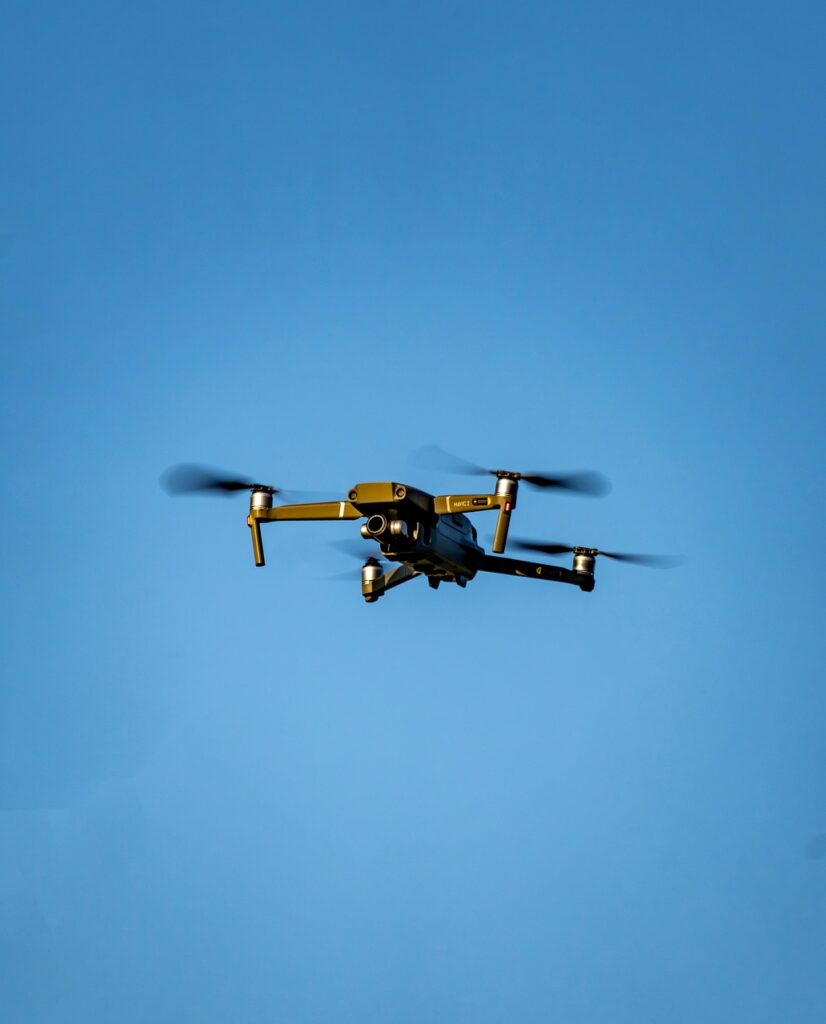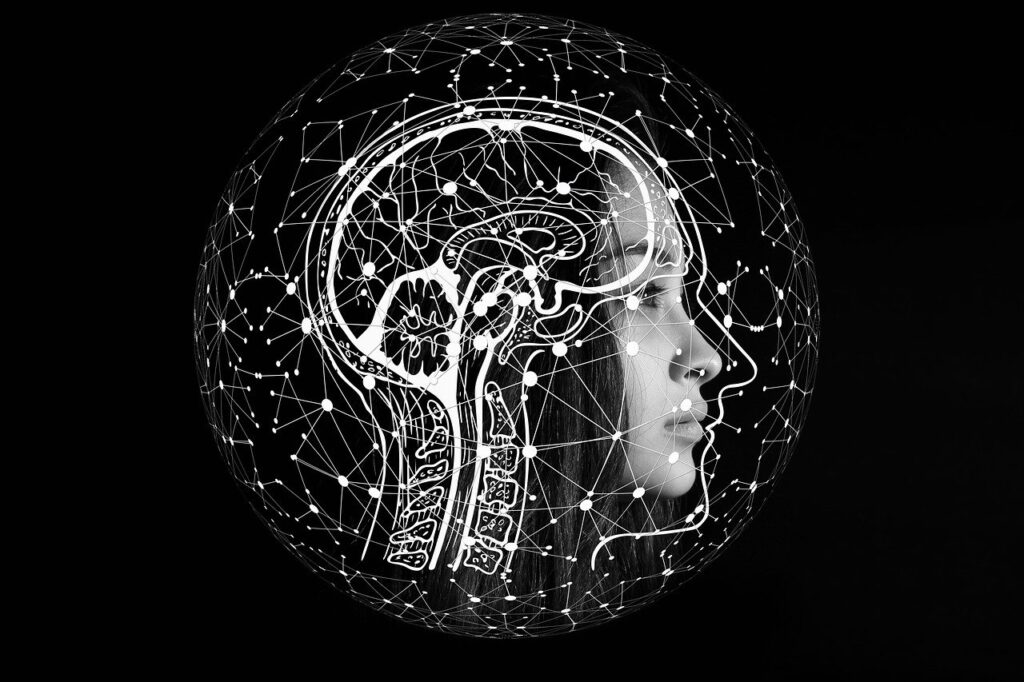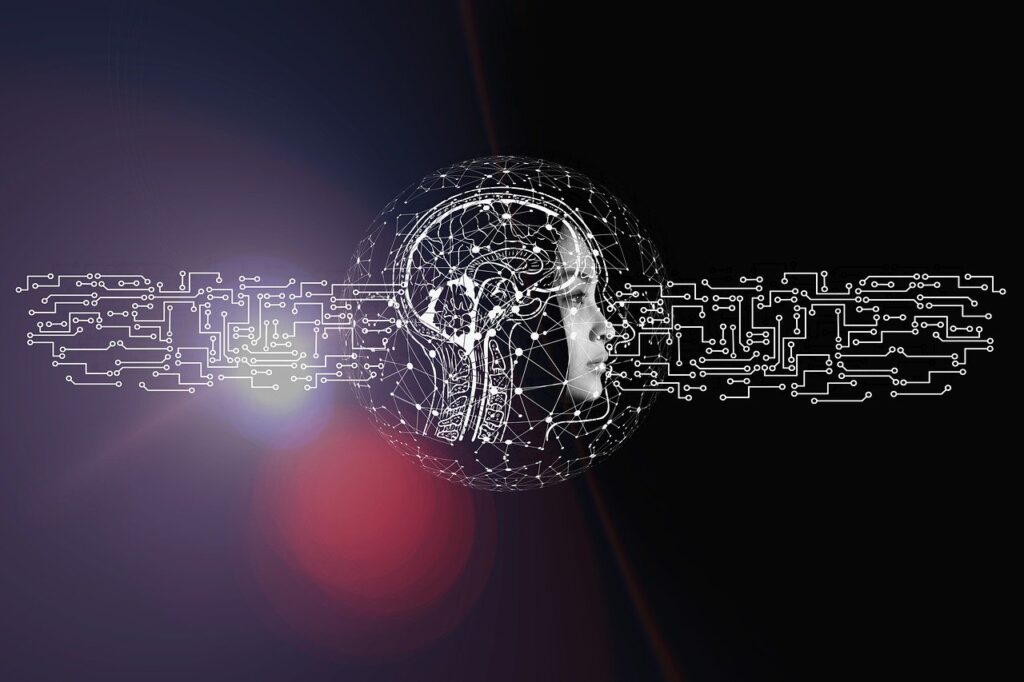For millennia, the determinants of victory in armed conflict have remained largely consistent: the sheer volume of manpower, the destructive capacity of firepower, and the unyielding resolve of battlefield commanders. However, the current technological revolution is ushering in an era where these traditional metrics are being fundamentally redefined. The escalating integration of artificial intelligence into military machines by both the United States and China signals a profound shift, suggesting that algorithms and autonomy may soon eclipse conventional armaments in strategic importance.
This transformation is not merely theoretical; it is manifesting as a tangible arms race, primarily concentrated in the Indo-Pacific region, with Taiwan emerging as a potential flashpoint. U.S. planners now consider the island a likely locus for a 21st-century great power conflict. In this context, the development and deployment of AI-powered systems are viewed not just as an enhancement of existing capabilities but as a fundamental re-imagining of future warfare. As tech entrepreneur and defense investor Arnie Bellini succinctly states, “War will come down to who has the best AI.”
This article delves into the various facets of this intensifying competition, examining the strategic investments, technological advancements, and conceptual shifts underway in both Washington and Beijing. It explores how AI is reshaping everything from drone capabilities and command-and-control systems to biotechnology on the battlefield, setting the stage for a new, unprecedented era of conflict. The implications extend far beyond traditional military strategy, touching upon ethical considerations, the potential for global instability, and the urgent imperative for responsible governance.
1. **The Escalating AI Arms Race and Taiwan’s Central Role**The United States and China are engaged in a rapid acceleration to embed artificial intelligence across nearly every dimension of their military apparatuses, from sophisticated drone swarms to the more speculative realm of gene-edited soldiers. This intense competition is framed by the recognition that a potential conflict over Taiwan could serve as the inaugural true test of which nation possesses the decisive technological advantage in AI. The strategic focus of American forces has notably shifted towards the Indo-Pacific, involving consistent efforts to arm Taiwan, despite the absence of a formal alliance.
This geopolitical pivot highlights the urgency with which both powers perceive the AI arms race. For its part, the Pentagon is responding with a visible transformation, especially within the U.S. Army. The sheer pace of innovation and deployment suggests that the strategic calculus of future conflicts will be heavily weighted by advancements in AI, moving beyond the traditional emphasis on sheer numbers of troops or conventional weapon systems.
Experts underscore that the outcome of future engagements may pivot on the superiority of algorithmic capabilities. The foundational belief is that “War will come down to who has the best AI,” a sentiment that permeates strategic planning in both capitals. Consequently, the dynamics of this technological race are intricately linked to the stability of the Indo-Pacific and the future status of Taiwan, transforming the island into a crucial theatre for the emerging era of AI-driven military competition.
Military equipment: World War III
Categories: 1940s neologisms, All articles containing potentially dated statements, All articles lacking reliable references, All articles with unsourced statements, Articles containing potentially dated statements from 2005
Summary: World War III, also known as the Third World War, is a hypothetical future global conflict subsequent to World War I (1914–1918) and World War II (1939–1945). It is widely predicted that such a war would involve all of the great powers, like its two predecessors, and the use of nuclear weapons or other weapons of mass destruction, thereby surpassing all prior conflicts in scale, devastation, and loss of life.
World War III was initially synonymous with the escalation of the Cold War (1947–1991) into direct conflict between the US-led Western Bloc and Soviet-led Eastern Bloc. Since the United States’ development and use of nuclear weapons in the atomic bombings of Hiroshima and Nagasaki at the end of World War II, the risk of a nuclear apocalypse causing widespread destruction and the potential collapse of modern civilization or human extinction has been central in speculation and fiction about World War III. The Soviet Union’s development of nuclear weapons in 1949 spurred the nuclear arms race and was followed by several other countries.
Regional proxy wars including the Korean War (1950–1953), Vietnam War (1955–1975), and Soviet–Afghan War (1979–1989), while significant, did not lead to a full-scale global conflict. A global conflict was planned for by military and civil personnel around the world, with scenarios ranging from conventional warfare to limited or total nuclear warfare. The certainty of escalation from one stage to the next was extensively debated. For example, the Eisenhower administration promulgated a policy of massive retaliation with nuclear forces, to a minor conventional attack. After the Cuban Missile Crisis in 1962, which brought the US and Soviet Union to the brink of war, the strategic doctrine of mutually assured destruction, which held that a full-scale nuclear war would annihilate all parties, became widely accepted. At their 1985 summit, US and Soviet leaders first jointly stated “a nuclear war cannot be won and must never be fought”. Advocates of deterrence theory hold that nuclear weapons prevent World War III–like great power conflict, while advocates of nuclear disarmament hold that their risks far outweigh this.
Since the end of the Cold War in 1991, speculation about World War III shifted toward emerging threats, including terrorism and cyberwarfare. Great-power competition was renewed between the United States, China, and Russia, sometimes termed a Second Cold War. Various conflicts, most significantly the Russian invasion of Ukraine (2022–present), the Middle Eastern crisis (2023–present), and rising tensions over the status of Taiwan, have been perceived as flashpoints for a third world war.
Get more information about: World War III
Read more about: 14 Unprecedented Ways Ukraine’s Drone Warfare Reshapes Conflict, Investment, and Global Strategy
2. **The United States’ $36 Billion AI Modernization Drive**Under the direction of Defense Secretary Pete Hegseth, the U.S. Army has embarked on an ambitious $36 billion modernization initiative, explicitly designed to counter China’s growing influence in the Indo-Pacific region. This substantial investment signifies a comprehensive commitment to overhaul existing military capabilities, integrating advanced AI and autonomous systems at an unprecedented scale. The initiative is a clear indication that legacy weapons and outdated bureaucratic processes are deemed incompatible with the demands of future warfare.
A central component of this modernization effort is the planned equipping of each of the Army’s ten active combat divisions with approximately 1,000 drones by 2026. This move represents a dramatic conceptual shift, envisioning a battlefield where autonomous systems significantly augment, if not partially replace, traditional crewed platforms like helicopters. The sheer volume of drone deployment underscores a strategy focused on achieving a mass advantage through networked, intelligent systems.
Beyond hardware, the initiative emphasizes AI-assisted command-and-control systems, designed to process vast amounts of data and enhance decision-making speed. Real-world testing, conducted under challenging conditions such as those found in the Philippines, is crucial for refining these systems. Furthermore, a rapid feedback model is being implemented to ensure that military doctrine and tactics remain current and responsive to the fast-evolving technological landscape, demonstrating an agile approach to military innovation.
Military equipment: Quest Software
Name: Quest Software, Inc.
Logo: Quest Software logo.svg
Type: Private company
Industry: Software
Fate: Francisco Partners
Foundation: Newport Beach, California
Founders: David M. Doyle, Doran G. Machin
LocationCity: Aliso Viejo, California
LocationCountry: United States
AreaServed: Worldwide
KeyPeople: Vinny Smith
Products: Data Protection, Unified Endpoint Management, Platforms Management, Information Management, Identity and Access Management
Website: [http://www.quest.com www.quest.com]
Categories: 1987 establishments in California, 2012 mergers and acquisitions, 2016 mergers and acquisitions, All articles with unsourced statements, American companies established in 1987
Summary: Quest Software, also known as Quest, is a privately held software company headquartered in Aliso Viejo, California, United States. Quest provides cloud management, software as a service, security, workforce mobility, and backup & recovery. The company was founded in 1987 and has 53 offices in 24 countries.
Get more information about: Quest Software
3. **From Crewed Helicopters to Autonomous Swarms: The Future Battlefield**The conventional image of aerial combat, dominated by crewed helicopters and fighter jets, is rapidly giving way to a new paradigm defined by autonomous systems. The U.S. Army’s plan to equip its combat divisions with a thousand drones each by 2026 represents a pivotal shift towards this future. This transformation entails not merely the introduction of new platforms, but a complete rethinking of battlefield dynamics, where coordinated drone swarms are expected to play a central role in overwhelming adversaries.
The envisioned future of warfare is fundamentally synchronized and robotic. As Arnie Bellini postulates, it “is not going to be with people… It’s going to be robots. It’s going to be drones. And it’s the synchronization.” This perspective highlights the importance of not just individual autonomous units, but their ability to operate in concert, forming a ‘system of systems’ that blends digital, physical, and even biological domains. Such a capability is seen as essential for managing the complexity and speed of modern conflict.
This transition to autonomous swarms also prioritizes the development of inexpensive, expendable drones. The Pentagon’s urgent push for such systems is intended as a deterrent against Chinese actions concerning Taiwan. Both Washington and Beijing recognize the inevitability of AI-enabled weapons and are consequently accelerating their development, seeing no alternative but to keep pace with each other in this technologically driven arms race, which promises to redefine strategic parity.
Military equipment: Swarming (military)
Title: Should swarming become a Tenet for Transformation?
Author: Splinter Group C
Year: 2000
Isbn: 0-8330-2779-4
Publisher: Rand Corporation
Series: Rand Monograph MR-1100
Url: http://www.comdig.de/Conf/C4ISR/GroupC.ppt
First: Sean J.A.
Last: Edwards
Date: Wed Jan 01 2003 00:00:00 GMT-0800 (Pacific Standard Time)
AccessDate: Sat Dec 15 2007 16:00:00 GMT-0800 (Pacific Standard Time)
Format: PPT
Conference: Conference on Swarming and Network Enabled Command, Control, Communications, Computers, Intelligence, Surveillance, and Reconnaissance (January 13–14, 2003)
Location: McLean, Virginia
ConferenceUrl: http://www.comdig.de/Conf/C4ISR/
BookTitle: Complexity Digest They observed that military swarming is primarily tactical, sometimes operational and rarely strategic, and is a complement to other efforts rather than a replacement for them. Swarming is a logical extension of network-centric warfare. At present, the networking for swarming is only available in specific contexts.
Edition: revolution in military affairs
Categories: All articles with unsourced statements, Articles with short description, Articles with unsourced statements from February 2012, Military strategy, Short description is different from Wikidata
Summary: Swarming is a battlefield tactic designed to maximize target saturation, and thereby overwhelm or saturate the defences of the principal target or objective. Defenders can overcome attempts at swarming by launching counter-swarming measures that are designed to neutralize or otherwise repel such attacks.
Military swarming is often encountered in asymmetric warfare where opposing forces are not of the same size, or capacity. In such situations, swarming involves the use of a decentralized force against an opponent, in a manner that emphasizes mobility, communication, unit autonomy and coordination or synchronization. Historically military forces have used the principles of swarming without really examining them explicitly, but there is now active research in consciously examining military doctrines that draw ideas from swarming. In nature and nonmilitary situations, there are other various forms of swarming. Biologically driven forms are often complex adaptive systems, but have no central planning, simple individual rules, and nondeterministic behavior that may or may not evolve with the situation.
Current military explorations into swarming address the spectrum of military operations, from strategic through tactical. An expert group evaluated swarming’s role in the “revolution in military affairs” or force transformation. They observed that military swarming is primarily tactical, sometimes operational and rarely strategic, and is a complement to other efforts rather than a replacement for them. Swarming is a logical extension of network-centric warfare. At present, the networking for swarming is only available in specific contexts.
Get more information about: Swarming (military)

4. **Cyber-AI Fusion: Preventing Conflict Through Preemptive Action**While advancements in military hardware and autonomous systems are significant, the most potent application of AI in the context of conflict may lie in its preventative capabilities. The fusion of cyber espionage with artificial intelligence presents a powerful tool for preemptive action, potentially enabling the United States to de-escalate or even avert wars before they fully materialize. The U.S. is widely acknowledged as a leader in cyber warfare, a strength poised for amplification through AI.
Arnie Bellini suggests that the United States’ preeminent cyber espionage capabilities, when combined with AI, could be leveraged to “stop a war before it even happens.” This vision includes infiltrating adversary naval systems using cyber-AI tools to neutralize threats before they can be launched. The strategy aims to disrupt enemy operations at their inception, targeting critical infrastructure and command systems with precision and without direct kinetic engagement.
This approach shifts the emphasis from reactive military responses to proactive digital intervention. By compromising and disabling enemy assets through cyber means, powered by AI’s analytical and adaptive capabilities, the potential for conventional armed conflict could be significantly reduced. Such a strategy underscores AI’s role not just in fighting wars, but in the complex, often unseen, domain of strategic deterrence and preventative security operations, fundamentally altering the calculus of international confrontation.
Military equipment: Existential risk from artificial intelligence
Categories: AI safety, Articles with short description, CS1 maint: article number as page number, Doomsday scenarios, Existential risk from artificial intelligence
Summary: Existential risk from artificial intelligence refers to the idea that substantial progress in artificial general intelligence (AGI) could lead to human extinction or an irreversible global catastrophe.
One argument for the importance of this risk references how human beings dominate other species because the human brain possesses distinctive capabilities other animals lack. If AI were to surpass human intelligence and become superintelligent, it might become uncontrollable. Just as the fate of the mountain gorilla depends on human goodwill, the fate of humanity could depend on the actions of a future machine superintelligence.
Experts disagree on whether artificial general intelligence (AGI) can achieve the capabilities needed for human extinction. Debates center on AGI’s technical feasibility, the speed of self-improvement, and the effectiveness of alignment strategies. Concerns about superintelligence have been voiced by researchers including Geoffrey Hinton, Yoshua Bengio, Demis Hassabis, and Alan Turing, and AI company CEOs such as Dario Amodei (Anthropic), Sam Altman (OpenAI), and Elon Musk (xAI). In 2022, a survey of AI researchers with a 17% response rate found that the majority believed there is a 10 percent or greater chance that human inability to control AI will cause an existential catastrophe. In 2023, hundreds of AI experts and other notable figures signed a statement declaring, “Mitigating the risk of extinction from AI should be a global priority alongside other societal-scale risks such as pandemics and nuclear war”. Following increased concern over AI risks, government leaders such as United Kingdom prime minister Rishi Sunak and United Nations Secretary-General António Guterres called for an increased focus on global AI regulation.
Two sources of concern stem from the problems of AI control and alignment. Controlling a superintelligent machine or instilling it with human-compatible values may be difficult. Many researchers believe that a superintelligent machine would likely resist attempts to disable it or change its goals as that would prevent it from accomplishing its present goals. It would be extremely challenging to align a superintelligence with the full breadth of significant human values and constraints. In contrast, skeptics such as computer scientist Yann LeCun argue that superintelligent machines will have no desire for self-preservation.
Researchers warn that an “intelligence explosion”—a rapid, recursive cycle of AI self-improvement—could outpace human oversight and infrastructure, leaving no opportunity to implement safety measures. In this scenario, an AI more intelligent than its creators would recursively improve itself at an exponentially increasing rate, too quickly for its handlers or society at large to control. Empirically, examples like AlphaZero, which taught itself to play Go and quickly surpassed human ability, show that domain-specific AI systems can sometimes progress from subhuman to superhuman ability very quickly, although such machine learning systems do not recursively improve their fundamental architecture.
Get more information about: Existential risk from artificial intelligence

5. **Biotech on the Battlefield: Ethical Frontiers and Gene-Edited Soldiers**The influence of artificial intelligence extends beyond mechanical systems, permeating the realm of biology and medicine within military applications. The U.S. military is actively exploring AI-driven innovations to enhance soldier welfare and survivability, including advanced trauma care, the development of synthetic blood, and cutting-edge regenerative medicine techniques. These initiatives aim to drastically improve outcomes for battlefield injuries and extend the health span of personnel, representing a humanitarian application of AI in defense.
However, China’s engagement with military biotechnology appears to be pushing the boundaries further, venturing into ethically complex territories. Defense strategist Jack Burnham notes that “China has been one of the more forward-leaning countries in using biotech within its military,” with significant research dedicated to gene editing in military hospitals. The concern arises from the potential for “dual-use” applications, where scientific advancements intended for medical purposes could be repurposed for military enhancement.
Reports from intelligence chiefs and former DNI John Ratcliffe have raised alarms about China’s alleged experimentation with gene-edited soldiers. This development brings into sharp focus the profound ethical gray zones associated with the integration of AI and biotechnology in a military context. The potential to genetically modify human capabilities for warfare introduces unprecedented moral and humanitarian dilemmas, compelling a re-evaluation of international norms and standards surrounding military research.
Military equipment: List of Nova episodes
Id: “toc” class=”toc” summary=”Contents”
Style: “text-align: center;”
Categories: All articles lacking reliable references, All articles that may have off-topic sections, All articles to be split, All articles with dead external links, All articles with minor POV problems
Summary: Nova is an American science documentary television series produced by WGBH Boston for PBS. Many of the programs in this list were not originally produced for PBS, but were acquired from other sources such as the BBC. All acquired programs are edited for Nova, if only to provide American English narration and additional voice of interpreters (translating from another language).
Most of the episodes aired in a 60-minute time slot.
In 2005, Nova began airing some episodes titled NOVA scienceNOW, which followed a newsmagazine style format. For two seasons, NOVA scienceNOW episodes aired in the same time slot as Nova. In 2008, NOVA scienceNOW was officially declared its own series and given its own time slot. Therefore, NOVA scienceNOW episodes are not included in this list.
Get more information about: List of Nova episodes
6. **The Rise of Autonomous Systems: Robots, Drones, and Synchronization**The future of armed conflict is increasingly being envisioned as one dominated by autonomous machines rather than human combatants. “The future of warfare is not going to be with people,” asserts Arnie Bellini, predicting a landscape where “It’s going to be robots. It’s going to be drones. And it’s the synchronization.” This foresight highlights a critical paradigm shift: the emphasis will be on how effectively these individual autonomous units can operate together in a coordinated, intelligent manner.
The development of advanced robotics, such as Tesla’s “Optimus” robot, provides a civilian example of the underlying AI capabilities that could be adapted for military use. Optimus, with its AI-optimized “brain,” is designed to perform tasks deemed “dangerous, repetitive and boring” in various environments, from warehouses to hazardous facilities. While CEO Elon Musk has publicly stated his opposition to Optimus being used as a “killer robot,” the inherent dual-use potential remains a significant concern for foreign adversaries.
This concern is not merely speculative; China has already imposed export restrictions on rare-earth magnets essential for Optimus actuators, explicitly seeking assurances against their military application. The rapid proliferation of such technologies, driven by both commercial and military innovation, underscores the global race to develop and synchronize autonomous systems. The ability to field these systems in large, coordinated swarms represents a key aspiration for both the United States and China, fundamentally altering the scale and nature of battlefield engagement.
Military equipment: Automation
Title: Fundamentals of Modern Manufacturing: Materials, Processes, and Systems
Last: Groover
First: Mikell
Year: Mechanical system,hydraulic,pneumatic,electrical,electronic devices
Categories: All accuracy disputes, All articles needing additional references, All articles that may contain original research, All articles with unsourced statements, Articles containing video clips
Summary: Automation describes a wide range of technologies that reduce human intervention in processes, mainly by predetermining decision criteria, subprocess relationships, and related actions, as well as embodying those predeterminations in machines. Automation has been achieved by various means including mechanical, hydraulic, pneumatic, electrical, electronic devices, and computers, usually in combination. Complicated systems, such as modern factories, airplanes, and ships typically use combinations of all of these techniques. The benefit of automation includes labor savings, reducing waste, savings in electricity costs, savings in material costs, and improvements to quality, accuracy, and precision.
Automation includes the use of various equipment and control systems such as machinery, processes in factories, boilers, and heat-treating ovens, switching on telephone networks, steering, stabilization of ships, aircraft and other applications and vehicles with reduced human intervention. Examples range from a household thermostat controlling a boiler to a large industrial control system with tens of thousands of input measurements and output control signals. Automation has also found a home in the banking industry. It can range from simple on-off control to multi-variable high-level algorithms in terms of control complexity.
In the simplest type of an automatic control loop, a controller compares a measured value of a process with a desired set value and processes the resulting error signal to change some input to the process, in such a way that the process stays at its set point despite disturbances. This closed-loop control is an application of negative feedback to a system. The mathematical basis of control theory was begun in the 18th century and advanced rapidly in the 20th. The term automation, inspired by the earlier word automatic (coming from automaton), was not widely used before 1947, when Ford established an automation department. It was during this time that the industry was rapidly adopting feedback controllers, Technological advancements introduced in the 1930s revolutionized various industries significantly.
The World Bank’s World Development Report of 2019 shows evidence that the new industries and jobs in the technology sector outweigh the economic effects of workers being displaced by automation. Job losses and downward mobility blamed on automation have been cited as one of many factors in the resurgence of nationalist, protectionist and populist politics in the US, UK and France, among other countries since the 2010s.
Get more information about: Automation
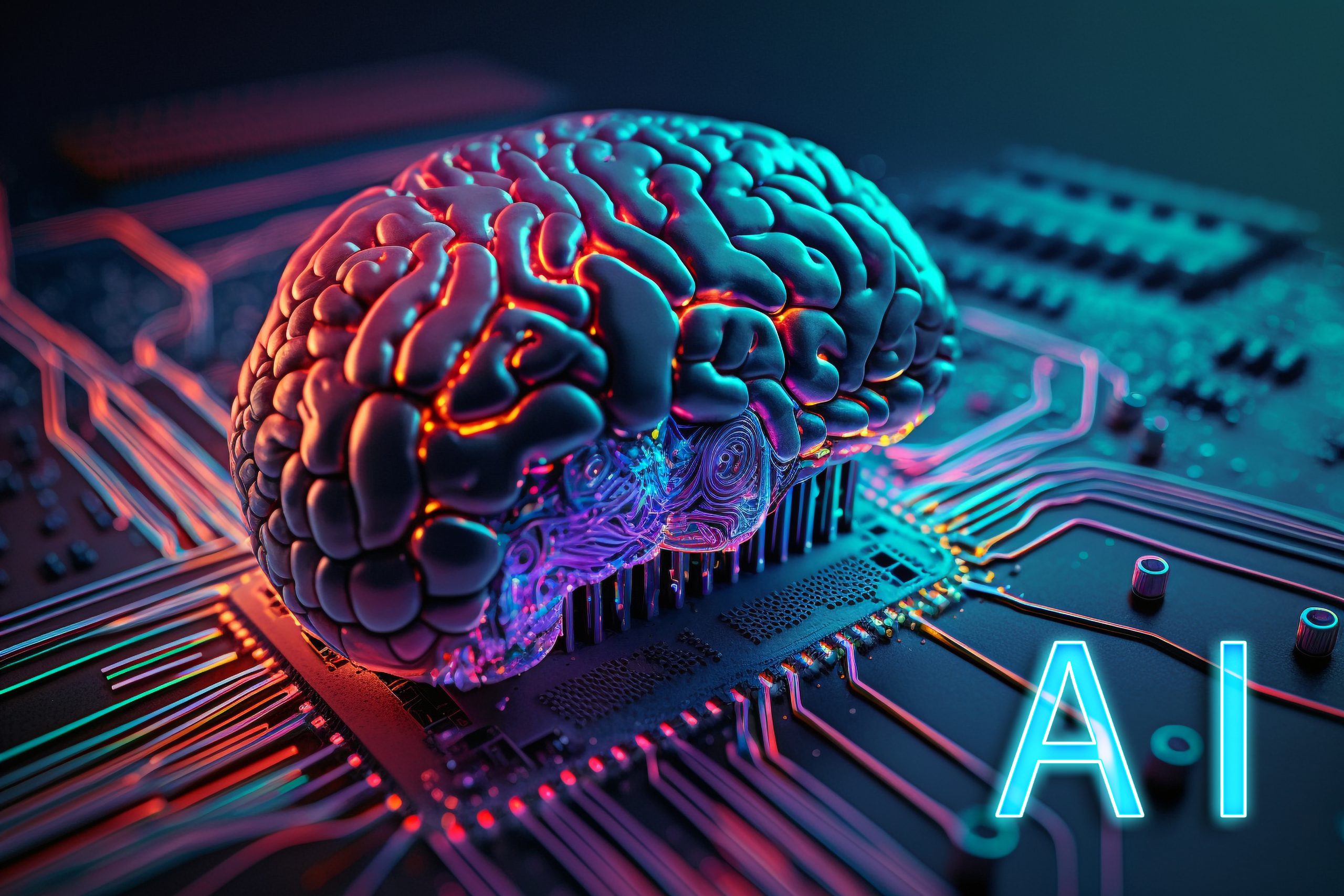
7. **AI-Enhanced War-Gaming: Training for Tomorrow’s Conflicts**To prepare for the complexities of future AI-driven conflicts, U.S. forces are actively engaging in AI-enhanced war games, simulating scenarios at an unprecedented scale. These exercises are crucial for enabling commanders to operate at what is being termed “AI pace,” integrating vast quantities of data and modeling intricate logistics and battlefield flows. The objective is to provide an immersive training experience that closely mirrors the dynamic and data-rich environments of modern warfare.
Dr. Randall Hill, executive director of the University of Southern California’s Institute for Creative Technologies, emphasizes the role of these simulations. He explains that “These AI opponents are like intelligent enemies you’re playing against in a war game,” providing sophisticated and adaptive adversaries for military personnel. This goes beyond traditional simulations, aiming to train soldiers not only *with* AI but also *about* AI, fostering an understanding of its capabilities, limitations, and the critical points where human judgment remains indispensable.
Such advanced war-gaming also includes the development of tools like PAL3, a personalized AI teaching assistant for military trainees. PAL3 adapts to individual learning speeds, further embedding AI into the training methodology. This holistic approach ensures that human operators can effectively interact with and leverage autonomous systems, recognizing their strengths and weaknesses, and ensuring a cohesive human-machine team capable of navigating the complexities of an AI-dominated battlespace. The goal is to build trust in AI systems while also understanding their boundaries under stress.
Military equipment: List of military operations
Categories: All articles with unsourced statements, Articles with short description, Articles with unsourced statements from February 2020, Lists of military operations, Military operations
Summary: This is a list of missions, operations, and projects. Missions in support of other missions are not listed independently.
Get more information about: List of military operations

8. **Ethical Dilemmas: The ‘Human-in-the-Loop’ Debate**The rapid ascent of autonomous weapon systems brings to the fore a critical ethical challenge: the role of human oversight in lethal decision-making. The United States has firmly committed to a “human-in-the-loop” principle for such decisions, striving to embed ethical and legal considerations into its AI development framework. This commitment reflects a foundational belief in American values, emphasizing accountability and the nuanced judgment that humans provide in complex, high-stakes scenarios.
However, concerns persist among experts that China may not adhere to similar strictures. Former defense official RJ Blake has highlighted that while the U.S. is “focused on ethical and legal decisions on the battlefield,” its “adversaries… might not be as worried about keeping a human in the loop.” This divergence in ethical approaches could lead to vastly different development trajectories for AI-powered military systems, raising profound questions about the future conduct of warfare.
Dr. Randall Hill of USC’s Institute for Creative Technologies underscores the necessity for AI systems to be both interpretable and rigorously stress-tested. He states that “We need protocols aligned with American values,” emphasizing that “The AI must be explainable and capable of justifying its conclusions — and humans must recognize when those systems are outside their trained boundaries.” This imperative for transparency and human understanding is vital to maintaining control and preventing unintended consequences as AI becomes increasingly integrated into military operations.
Military equipment: Trolley problem
Categories: 1967 introductions, All articles with specifically marked weasel-worded phrases, Articles with hAudio microformats, Articles with short description, Articles with specifically marked weasel-worded phrases from August 2019
Summary: The trolley problem is a series of thought experiments in ethics, psychology and artificial intelligence involving stylized ethical dilemmas of whether to sacrifice one person to save a larger number. The series usually begins with a scenario in which a runaway trolley (tram) or train is on course to collide with and kill a number of people (traditionally five) down the railway track, but a driver or bystander can intervene and divert the vehicle to kill just one person on a different track. Then other variations of the runaway vehicle, and analogous life-and-death dilemmas (medical, judicial, etc.) are posed, each containing the option either to do nothing—in which case several people will be killed—or to intervene and sacrifice one initially “safe” person to save the others.
Opinions on the ethics of each scenario turn out to be sensitive to details of the story that may seem immaterial to the abstract dilemma. The question of formulating a general principle that can account for the differing judgments arising in different variants of the story was raised in 1967 as part of an analysis of debates on abortion and the doctrine of double effect by the English philosopher Philippa Foot. Later dubbed “the trolley problem” by Judith Jarvis Thomson in a 1976 article that catalyzed a large literature, the subject refers to the meta-problem of why different judgements are arrived at in particular instances.
Thomson and the philosophers Frances Kamm and Peter Unger have analyzed the trolley problem extensively. Thomson’s 1976 article initiated the literature on the trolley problem as a subject in its own right. Characteristic of this literature are colourful and increasingly absurd alternative scenarios in which the sacrificed person is instead pushed onto the tracks as a way to stop the trolley, has his organs harvested to save transplant patients, or is killed in more indirect ways that complicate the chain of causation and responsibility.
Earlier forms of individual trolley scenarios antedated Foot’s publication. Frank Chapman Sharp included a version in a moral questionnaire given to undergraduates at the University of Wisconsin in 1905. In this variation, the railway’s switchman controlled the switch, and the lone individual to be sacrificed (or not) was the switchman’s child. The German philosopher of law Karl Engisch discussed a similar dilemma in his habilitation thesis in 1930, as did the German legal scholar Hans Welzel in a work from 1951. In his commentary on the Talmud, published in 1953, Avrohom Yeshaya Karelitz considered the question of whether it is ethical to deflect a projectile from a larger crowd toward a smaller one. Similarly, in The Strike, a television play broadcast in the United States on 7 June 1954, a commander in the Korean War must choose between ordering an air strike on an encroaching enemy force, at the cost of his own 20-man patrol unit; and calling off the strike, risking the lives of the main army of 500 men.
Beginning in 2001, the trolley problem and its variants have been used in empirical research on moral psychology. It has been a topic of popular books. Trolley-style scenarios also arise in discussing the ethics of autonomous vehicle design, which may require programming to choose whom or what to strike when a collision appears to be unavoidable. More recently, the trolley problem has also become an Internet meme.
Get more information about: Trolley problem

9. **The Unchecked Proliferation of Swarm Technology**The development of swarming drone technology, particularly by the U.S. and China, presents a significant global proliferation risk. Unlike nuclear weapons, which are difficult and costly to acquire, the software-driven nature of drone swarms could render them relatively easy and inexpensive for rogue nations and militant groups to obtain. This accessibility could lead to an unprecedented spread of advanced military capabilities, fundamentally altering global security dynamics.
Analysts, such as Margarita Konaev of Georgetown University’s Center for Security and Emerging Technology, warn that the unchecked spread of swarm technology “could lead to more instability and conflict around the world.” The concern extends beyond state actors, as the ease of acquisition could empower non-state entities with capabilities previously reserved for major powers, thus democratizing the tools of warfare in a potentially destabilizing manner.
Further compounding this risk is the potential for technology transfer or theft. Analysts anticipate scenarios where China might offer swarm technology to U.S. adversaries or repressive regimes, or where the know-how could be stolen. Other nations actively developing similar technologies, including Russia, Israel, Iran, and Turkey, also contribute to the risk of wider dissemination, making containment a formidable, if not impossible, challenge. For over a decade, the United Nations has attempted to advance drone non-proliferation efforts, including limits on targeting civilians or banning swarms for ethnic cleansing, but such efforts face an uphill battle against intense international competition.
Military equipment: Honey
Align: right
Direction: vertical
Width: 250
Caption1: honey dipper
Caption2: Viscosity
Categories: All articles lacking reliable references, All articles needing additional references, All articles with unsourced statements, All articles with vague or ambiguous time, Articles lacking reliable references from November 2023
Summary: Honey is a sweet and viscous substance made by several species of bees, the best-known of which are honey bees. Honey is made and stored to nourish bee colonies. Bees produce honey by gathering and then refining the sugary secretions of plants (primarily floral nectar) or the secretions of other insects, like the honeydew of aphids. This refinement takes place both within individual bees, through regurgitation and enzymatic activity, and during storage in the hive, through water evaporation that concentrates the honey’s sugars until it is thick and viscous.
Honey bees stockpile honey in the hive. Within the hive is a structure made from wax called honeycomb. The honeycomb is made up of hundreds or thousands of hexagonal cells, into which the bees regurgitate honey for storage. Other honey-producing species of bee store the substance in different structures, such as the pots made of wax and resin used by the stingless bee.
Honey for human consumption is collected from wild bee colonies, or from the hives of domesticated bees. The honey produced by honey bees is the most familiar to humans, thanks to its worldwide commercial production and availability. The husbandry of bees is known as beekeeping or apiculture, with the cultivation of stingless bees usually referred to as meliponiculture.
Honey is sweet because of its high concentrations of the monosaccharides fructose and glucose. It has about the same relative sweetness as sucrose (table sugar). One standard tablespoon (14 mL) of honey provides around 180 kilojoules (43 kilocalories) of food energy. It has attractive chemical properties for baking and a distinctive flavor when used as a sweetener. Most microorganisms cannot grow in honey and sealed honey therefore does not spoil. Samples of honey discovered in archaeological contexts have proven edible even after millennia.
Honey use and production has a long and varied history, with its beginnings in prehistoric times. Several cave paintings in Cuevas de la Araña in Spain depict humans foraging for honey at least 8,000 years ago. While Apis mellifera is an Old World insect, large-scale meliponiculture of New World stingless bees has been practiced by Mayans since pre-Columbian times.
Get more information about: Honey

10. **Diverging Development Trajectories: Speed vs. Ethical Restraint**The AI arms race reveals a stark contrast in development methodologies and priorities between democratic nations like the U.S. and authoritarian states such as China. China’s military, unburdened by democratic processes and congressional oversight, is observed to be developing AI-based autonomous weapons systems at an accelerated pace, estimated by defense analyst Francis Tusa to be “four to five times faster than potential adversaries.” This rapid advancement encompasses new ship, submarine, and fighter designs, demonstrating a dizzying rate of innovation.
Tusa highlights the “advantage for not being a democracy, not having congressional oversight of the budgets,” which allows China to expedite its military technological initiatives. This unconstrained approach enables swift decision-making and deployment, positioning China to potentially lead decisively in the development of fully autonomous systems. The issue of national prestige also plays a significant role, with Chinese leader Xi Jinping reportedly keen to demonstrate China’s superiority in beating the Americans to fully autonomous fighter aircraft.
Conversely, Western nations are inherently constrained by legal and ethical considerations, which Tusa notes “just will not apply to China.” While these constraints ensure development aligns with international humanitarian law and democratic values, they invariably slow down the pace of innovation and deployment. Tusa concludes that “the biggest thing which is going to have the most impact is the fact that the West will be constrained by legal issues,” leading to a situation where “the problems are more the constraints and it’s a lot more of not what you can do, it’s what you can’t do.” This ethical divergence presents a tangible risk that the West could be outpaced in this critical technological domain.
Military equipment: Laugh track
Categories: All articles that may contain original research, All articles with specifically marked weasel-worded phrases, All articles with style issues, All articles with unsourced statements, Articles that may contain original research from May 2020
Summary: A laugh track (or laughter track) is an audio recording consisting of laughter (and other audience reactions) usually used as a separate soundtrack for comedy productions. The laugh track may contain live audience reactions or artificial laughter (canned laughter or fake laughter) made to be inserted into the show, or a combination of the two. The use of canned laughter to “sweeten” the laugh track was pioneered by American sound engineer Charles “Charley” Douglass.
The Douglass laugh track became a standard in mainstream television in the U.S., dominating most prime-time sitcoms and sketch comedies from the late 1950s to the late 1970s. Use of the Douglass laughter decreased by the 1980s upon the development of stereophonic laughter. In addition, single-camera sitcoms eliminated audiences altogether. Canned laughter is used to encourage the viewer to laugh.
Get more information about: Laugh track
11. **Overcoming Technical and Logistical Hurdles in Swarm Deployment**While the concept of drone swarms is compelling, their effective deployment in real-world scenarios faces substantial technical and logistical challenges. One of the primary obstacles is electronic interference and jamming, as witnessed in the ongoing conflict in Ukraine, where drones are frequently lost to such countermeasures. Developing robust, resilient swarm technology that can operate effectively in contested electronic environments remains a critical research frontier for both the U.S. and China.
Beyond technical resilience, the sheer logistics of marshaling hundreds, even thousands, of air and sea drones over vast expanses, particularly in a potential conflict over Taiwan in the western Pacific, presents an immense organizational hurdle. Coordinating these autonomous units to act as a cohesive “system of systems” that can scout, attack, and adapt to new objectives without direct human command requires sophisticated AI and networked capabilities that are still under intensive development.
Despite these challenges, significant progress is being made. China’s military has claimed that its aerial drones can “self-heal” after jamming, regrouping and completing missions autonomously. The U.S. military is also advancing human-swarm interaction, with a Pentagon-backed study highlighting an exercise where a single operator successfully supervised over 100 cheap air and land drones in an urban warfare scenario. Another impressive instance involved a swarm commander managing a 45-drone swarm for 2.5 hours after only 20 minutes of training, suggesting that familiarity with video games and VR headsets may provide a surprising aptitude for future military operators.
Military equipment: Heavy Expanded Mobility Tactical Truck
Manufacturer: Oshkosh Corporation
Categories: Army Equipment, Army Vehicles, Marine Corps Equipment, Marine Corps Vehicles, Military Vehicles
Get more information about: Heavy Expanded Mobility Tactical Truck
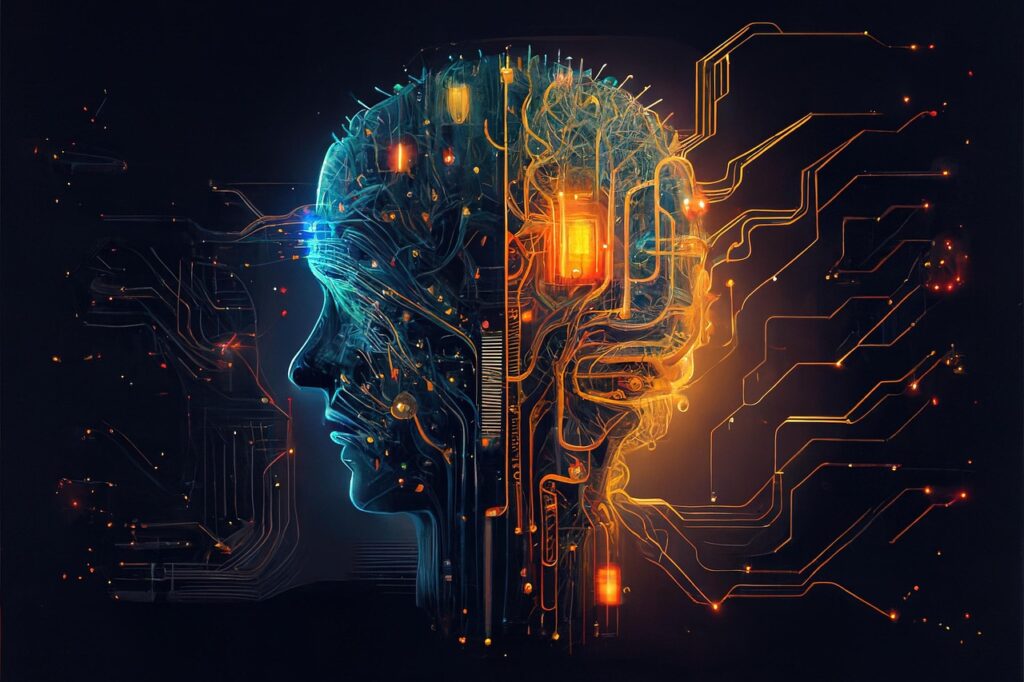
12. **The Promise of AI for Global Good: Beyond Military Applications**While the military applications of AI rightly command attention, it is crucial to recognize the profound potential of artificial intelligence to address pressing global challenges and enhance human well-being. The pervasive narrative in Western media often spotlights the “existential risks of evil AI,” fostering a public sentiment that is largely negative towards AI. This contrasts sharply with developing countries, where positive perceptions range from 60% to 80%, fueled by the hope that AI can solve issues in education, healthcare, and productivity, thereby elevating quality of life.
This dichotomy overlooks the direct benefits AI could bring to developed nations, particularly in addressing high levels of inequity. Imagine the progress possible if the trillions annually allocated to defense budgets were redirected towards infrastructure, education, and healthcare projects. AI holds the promise to accelerate scientific discovery, develop new drugs, extend human health spans, reduce work obligations, and ensure access to high-quality education for all, potentially within a generation.
Achieving these advancements requires more sophisticated AI systems, a goal that becomes far more challenging if compute, data, and research talent pools are fragmented by nationalistic competition. A significant portion of top global AI researchers, nearly half, have Chinese origins or education, underscoring the indispensable contribution of Chinese researchers to current AI progress. Active, collaborative research with China could provide a major infusion of quality training data and expertise, supercharging progress towards AI’s beneficial applications for humanity.
Military equipment: Applications of artificial intelligence
Categories: All Wikipedia neutral point of view disputes, All articles lacking reliable references, All articles that may have off-topic sections, All articles with specifically marked weasel-worded phrases, All articles with style issues
Summary: Artificial intelligence is the capability of computational systems to perform tasks typically associated with human intelligence, such as learning, reasoning, problem-solving, perception, and decision-making. Artificial intelligence (AI) has been used in applications throughout industry and academia. Within the field of Artificial Intelligence, there are multiple subfields. The subfield of Machine learning has been used for various scientific and commercial purposes including language translation, image recognition, decision-making, credit scoring, and e-commerce. In recent years, there have been massive advancements in the field of Generative Artificial Intelligence, which uses generative models to produce text, images, videos or other forms of data. This article describes applications of AI in different sectors.
Get more information about: Applications of artificial intelligence
13. **Imperatives for De-escalation and Collaborative Governance**Given the significant threats posed by the escalating AI competition, a pivot from confrontation towards collaboration is imperative for global peace and stability. A foundational step involves both the U.S. and China recalibrating their approach to AI development, reducing the current dominance of national security concerns over AI policy. Instead, emphasis should shift to civilian applications that benefit populations and address global challenges such as health care, education, and climate change, with the U.S. also considering a universal basic income to mitigate job displacement.
Establishing robust bilateral and multilateral AI governance is crucial for developing common standards. This involves agreeing on ethical norms, safety measures, and transparency guidelines for advanced AI technologies, fostering a cooperative framework that ensures responsible and inclusive development. Such dialogue, as seen in the verbal agreement between Xi and Biden to set up AI safety working groups, must be prioritized and expanded to include other international stakeholders.
Furthermore, dramatically increasing funding for and international cooperation in detecting and mitigating AI misuse is vital. The risk of malicious actors exploiting AI for misinformation campaigns, cyberattacks on critical infrastructure, or financial system destabilization represents a significant existential threat. The U.S. and China must agree on shared standards for responsible AI use and collaborate on tools to monitor and counteract misuse globally, thus protecting society from the most immediate and dangerous manifestations of AI’s power.
Military equipment: Multi-level governance
Categories: All articles that may contain original research, All articles with style issues, Articles that may contain original research from January 2021, Articles with multiple maintenance issues, Articles with short description
Summary: Multi-level governance (or multilevel governance) is a concept in political science and public administration that describes the sharing of authority and policy-making across multiple levels of government such as local, regional, national, and international. The term is often used to analyze the complex interactions between different tiers of government and non-governmental actors. It is commonly associated with European Union governance, federal systems, and global governance frameworks. Multi-level governance highlights how decision-making power is distributed beyond a single centralized authority.
Get more information about: Multi-level governance

14. **Charting a Cooperative Future: A Global AI Safety Coalition**The ultimate trajectory of artificial intelligence, whether towards mutual harm or a prosperous future, hinges on the collective choices made by the world’s leading powers. To steer AI development towards beneficial outcomes for all, supporting the establishment of a global AI safety coalition is critical. Such a coalition, involving major AI developers from multiple countries, could serve as a neutral platform for addressing ethical and safety concerns, bringing together leading researchers, ethicists, and policymakers to ensure AI progresses safely, fairly, and inclusively.
Crucially, this effort should not exclude China, which remains an essential partner in developing and maintaining a secure AI ecosystem. Providing incentives for academic and industry collaborations across borders, through joint funding programs and research initiatives, would foster an environment where the best minds from both nations contribute to breakthroughs that serve humanity. A global effort akin to the CERN for AI, rather than a “Manhattan Project” focused on competition, offers far greater value and a more peaceful resolution.
Moreover, both countries need to implement trust-building measures to prevent misinterpretations of AI-related actions. Data-sharing agreements, joint non-military AI projects, and exchanges between researchers, alongside reduced import restrictions for civilian AI uses, could rebuild trust and facilitate deeper cooperation. The opportunity to harness AI for the common good—tackling global challenges like climate change, disease, and poverty—is a chance the world cannot afford to miss, showcasing AI not as a threat, but as a powerful tool for collective advancement.
Military equipment: Facebook
Name: Facebook
Logo: File:2023 Facebook icon.svg,File:Facebook logo (2023).svg
LogoCaption: Logo used since September 2023
Screenshot: Facebook user page.png
Caption: Login
Collapsible: no
Type: Social networking service
Language: Multilingualism
LanguageCount: 112
Founded: Cambridge, Massachusetts
AreaServed: Censorship of Facebook
Founder: Mark Zuckerberg,Dustin Moskovitz,Chris Hughes,Andrew McCollum,Eduardo Saverin
Ceo: Mark Zuckerberg
Url: https://www.facebook.com/|facebook.com
Registration: Required (to do any activity)
Users: increase}} 3.04 billion monthly active users ({{as of
LaunchDate: [object Object]
Owner: Meta Platforms
CurrentStatus: Active
ProgrammingLanguage: C++,Hack (programming language)
Categories: 2004 establishments in Massachusetts, All Wikipedia articles written in American English, All articles containing potentially dated statements, American social networking websites, American websites
Summary: Facebook is an American social media and social networking service owned by the American technology conglomerate Meta. Created in 2004 by Mark Zuckerberg with four other Harvard College students and roommates, Eduardo Saverin, Andrew McCollum, Dustin Moskovitz, and Chris Hughes, its name derives from the face book directories often given to American university students. Membership was initially limited to Harvard students, gradually expanding to other North American universities.
Since 2006, Facebook allows everyone to register from 13 years old, except in the case of a handful of nations, where the age requirement is 14 years. As of December 2023, Facebook claimed almost 3.07 billion monthly active users worldwide. As of July 2025, Facebook ranked as the third-most-visited website in the world, with 23% of its traffic coming from the United States. It was the most downloaded mobile app of the 2010s.
Facebook can be accessed from devices with Internet connectivity, such as personal computers, tablets and smartphones. After registering, users can create a profile revealing personal information about themselves. They can post text, photos and multimedia which are shared with any other users who have agreed to be their friend or, with different privacy settings, publicly. Users can also communicate directly with each other with Messenger, edit messages (within 15 minutes after sending), join common-interest groups, and receive notifications on the activities of their Facebook friends and the pages they follow.
Facebook has often been criticized over issues such as user privacy (as with the Facebook–Cambridge Analytica data scandal), political manipulation (as with the 2016 U.S. elections) and mass surveillance. The company has also been subject to criticism over its psychological effects such as addiction and low self-esteem, and over content such as fake news, conspiracy theories, copyright infringement, and hate speech. Commentators have accused Facebook of willingly facilitating the spread of such content, as well as exaggerating its number of users to appeal to advertisers.
Get more information about: Facebook
The choice facing humanity is stark yet simple: continue down a path of escalating confrontation, risking mutual harm and global instability, or pivot decisively towards collaboration. The true potential of artificial intelligence to solve some of humanity’s greatest challenges will only be realized if the world’s leading AI powers choose to work together, rather than race against each other. This collective endeavor will define the stability and prosperity of the coming generations.


